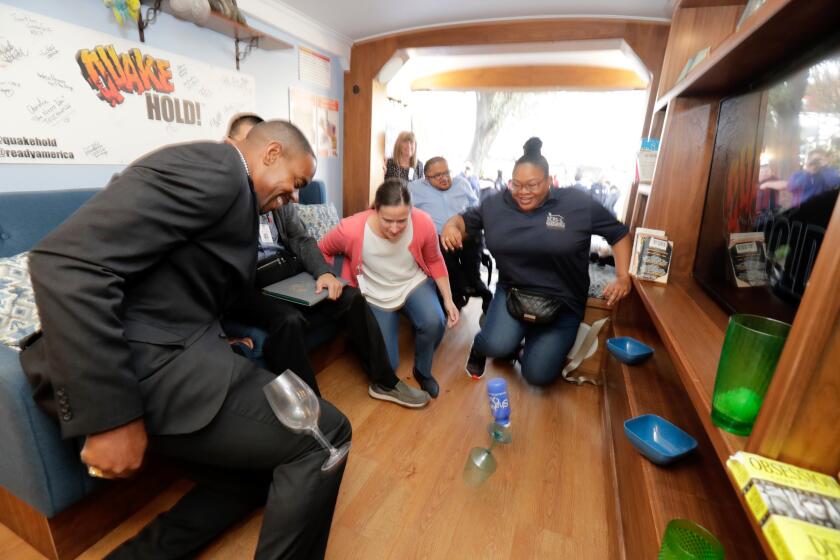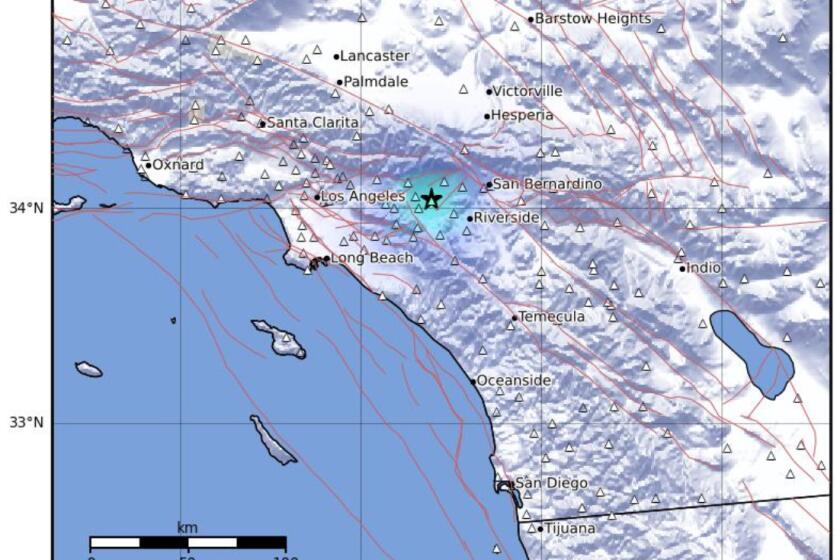Google adds California’s earthquake early warning system into Android phones

SAN FRANCISCO — Google is adding California’s earthquake early warning system as part of its Android operating system for mobile phones, the company said Tuesday.
The feature means that the state’s earthquake early warnings will be piped into phones using the Android system without the need to download a separate app.
Gov. Gavin Newsom welcomed the addition of the feature, which relies on technology managed by the U.S. Geological Survey.
“It’s not every day that Silicon Valley looks to state government for ... innovation, but that’s exactly what is happening today,” Newsom said in a statement. “This announcement means that California’s world-class earthquake early warning system will be a standard function on every Android phone — giving millions precious seconds to drop, cover and hold on when the Big One hits.”
Earthquake early warnings can also be accessed on Apple’s iOS system and the Android system through apps such as MyShake, developed by UC Berkeley; Early Warning Labs’ QuakeAlertUSA app; and, for L.A. County residents, ShakeAlertLA, developed by the city of Los Angeles.
With the new MyShake app, how many seconds would you get from an earthquake early warning?
Earthquake early warnings are also sent by text message using the Wireless Emergency Alert system, which offer warnings through Amber Alert-style text messages. But they can be slower than the apps.
The earthquake early warning system works on a simple principle: The shaking from an earthquake travels at the speed of sound through rock — slower than the speed of today’s communications systems. For example, it would take more than a minute for a magnitude 7.8 earthquake that started at the Salton Sea to shake Los Angeles, 150 miles away, traveling along the state’s longest fault, the San Andreas.
Other nations, including Japan, Mexico, Taiwan and Turkey, already have operational systems. In Japan, the early warnings are a part of life: Schoolchildren are trained to drop, cover and hold on when they hear alerts; TV shows are interrupted by a familiar chime and an announcer who provides details of the expected shaking; and cellphones automatically broadcast audible alerts.
Earthquakes need to be at least a magnitude 4.5 for the USGS’ ShakeAlert system to consider send out warnings to devices that are seeing at least weak shaking, or intensity level 3, on the Modified Mercalli Intensity Scale.
Level 3 shaking on the Modified Mercalli Intensity Scale is defined as being felt quite noticeably by people indoors, especially on upper floors of a building, and can cause standing motor vehicles to slightly rock. Some might think the shaking is resulting from the vibrations felt when a heavy truck passes.
Institutions across California have launched earthquake early warning systems that rely on the USGS’ ShakeAlert system, including the BART commuter rail system in the Bay Area and the Los Angeles County Metropolitan Transportation Authority that are designed to slow trains before shaking arrives; public address systems in some buildings, such as L.A. City Hall and a 19-story condo tower in Marina del Rey, are wired to warn residents of incoming shaking through a public address system.
Such a system has been installed by Early Warning Labs at Cedars-Sinai Medical Center, where an audible alert is programmed to go out in advance of shaking, saying, “Earthquake, earthquake. Expect shaking. Drop, cover and hold on. Protect yourself now.”
Hospital staff have been trained on how to react to the alerts, and staff have gone through drills.
More to Read
Sign up for Essential California
The most important California stories and recommendations in your inbox every morning.
You may occasionally receive promotional content from the Los Angeles Times.












